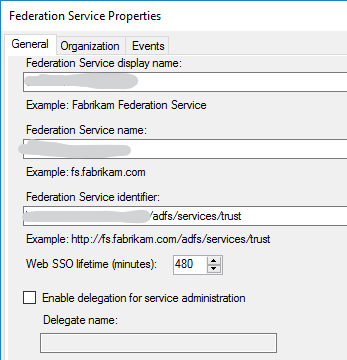How to federate multiple AzureAD Enterprise Applications with same on-premise ADFS Farm?
Hi there
We have Enterprise Application in Azure AD tenant that federates with an on-premise ADFS farm.
In the SAML config, we specify the identifier URL for the ADFS farm, and this works okay.
We want to create a second Enterprise Application for UAT that uses the same on-premise ADFS farm, but are getting this error:

How do we get around this issue? Is there a way multiple Azure AD Enterprise Applications can re-use the same identifier/reply/sing-on URL? How do we create a "shared" login thing that can be re-used. Otherwise, how can we get around this uniqueness requirement please?
As far as I can tell, I can't add more "identifier" values for my on-premise ADFS farm. The "Service Configuration" interface seems to let you only select one. Is there any way to add multiple identifiers?

Thank you for any assistance you can provide.
Some documentation I found:
https://learn.microsoft.com/en-us/azure/active-directory/manage-apps/troubleshoot-saml-based-sso
To add a second instance of an application, you need to be able to:
• Configure a unique identifier for the second instance. You won’t be able to configure the same identifier used for the first instance.
Other similar issues:
https://learn.microsoft.com/en-us/answers/questions/137909/alibaba-cloud-service-role-based-sso-azure-saml-ss.html
https://learn.microsoft.com/en-us/answers/questions/8183/multiple-apps-in-azure-app-access-panel-with-one-e.html